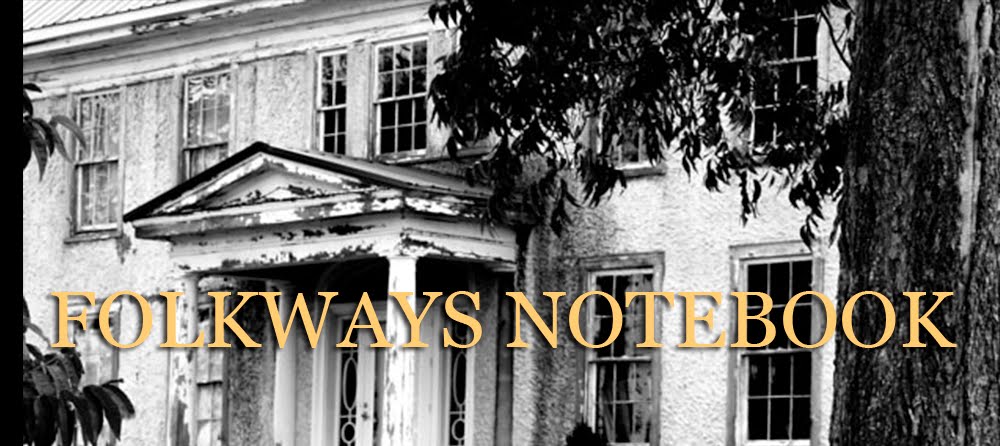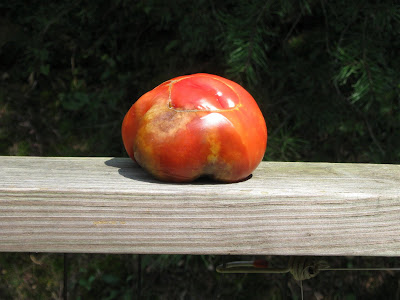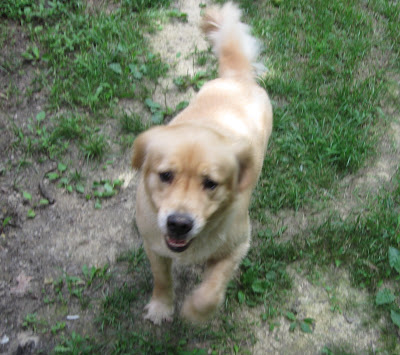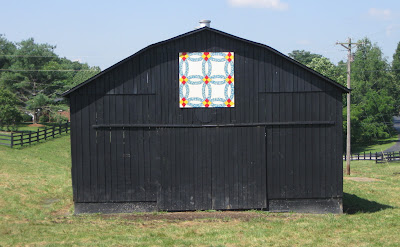His story begins with his family settling in Kentucky from Scotland and the British Isles in the 1700s. This generation of Denny's that arrived were stone masons and iron workers. By 1850 the Louisville and Nashville (L and N) Railroad Company was chartered and soon after in the latter part of the 1800s his great-grandfather, Levi Denny, was the first Denny generation to join with L and N. He was working for the railroad while he lived in Broadhead , Kentucky. Great-grandfather Denny and all the other employees at the time were paid in gold for their work.
 MULES, MEN, SHOVELS, WAGONS, AND BLASTING ROD -- KENTUCKY-- PROBABLY ROCKCASTLE COUNTY.
MULES, MEN, SHOVELS, WAGONS, AND BLASTING ROD -- KENTUCKY-- PROBABLY ROCKCASTLE COUNTY.Photo Courtesy of Maude Moore.
The second generation to work for L and N was Roscoe Denny, born in 1904. He was Wayne Denny's grandfather who worked out of Cynthiana, Kentucky laying double tracking with horses and mules, also double tracked to Sinks, Kentucky.
As well as working track installation he helped build RR bridges. The photo above displays the early working conditions during Roscoe's time with the RR. The photo above is a section crew other than the one Roscoe Denny worked with but taken during the period when he was doing the same type of work.
L and N divided up the track line into sections. A section was about 55 to 60 miles or so long. Section crews were assigned sections to work and maintain.
Roscoe Denny died of typhoid fever in 1927 at 23 years of age. He had worked for L and N for 4 years and had become a #1 bridge man when he died.
The gold payroll was dismissed by the time Roscoe Denny began working for the RR and the currency payroll system was established for all future workers.
L and N didn't sub-contract out their work. They were in charge of records, signals, bridges, tracks, engine manufacturing (except for the M1 engine), building depots, and all other concerns that meant running a successful rail line. They manufactured their steam engines in Louisville, Kentucky.
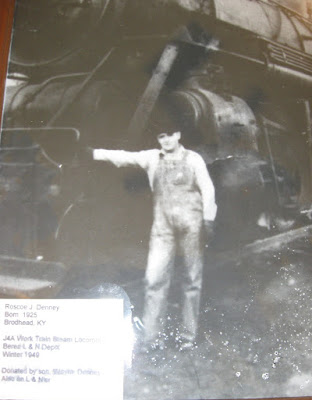 ROSCOE DENNY JR. WITH A STEAM ENGINE AT THE BEREA, KENTUCKY DEPOT IN 1949.
ROSCOE DENNY JR. WITH A STEAM ENGINE AT THE BEREA, KENTUCKY DEPOT IN 1949.Photo Courtesy of the Denny Family
Eventually, L and N became a top contender of rail transportation with Union Pacific and New York Central.
Wayne related that when the family would be together that RR talk would be one of the main subjects.
 L AND N SECTION HOUSE.
L AND N SECTION HOUSE.(Possibly repainted green to white?)
Photo from L and N section houses in Georgia.
Wayne Denny, fourth generation, lived a good part of his younger life in Berea, Kentucky. He lived with his grandmother and grandfather in a section house on W. Jefferson Street. He explained how L and N provided section housing for minimal rent to workers of each section. These were usually sets of smaller frame houses with one central large house. Wayne's grandparents lived in a large section house. He told me that all the section houses in Berea are no longer extant (existing). He remembers the section houses as painted a dark green with white trim-- these colors were used in all that Wayne was familiar with -- making it easy to identify houses in other sections. The homes all had large lots and his grandparents grew a large garden every year on theirs. He remembers walking to the Berea train depot to pay the minimal rent on his grandparents section house.
Wayne Denny, born in 1933, has worked almost 42 years with the railroad. He began with L and N which was then bought out in the 70s and is now the CSX railroad.
The fifth generation and the youngest family member to work for the now CSX railroad is Wayne's son Robert Denny. He speaks highly of the railroad. They sent him to school at Marshal University in Huntington, W. Virginia and then sent him to the Railroad Development Institution in Atlanta, Ga. He foresees a future of more lines being established in the U.S. The U.S. government is one of the largest users of the rail system. Presently he is an extra board conductor. An extra board conductor means, "on call"
Five generations of family members tells one that the railroading life was a good life.
